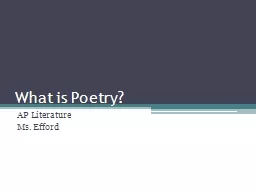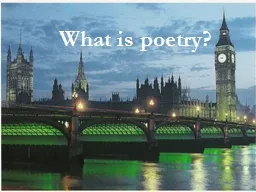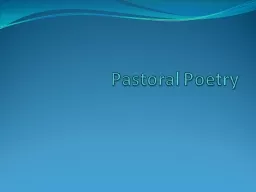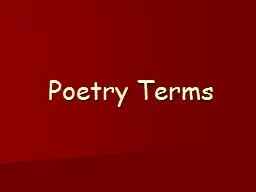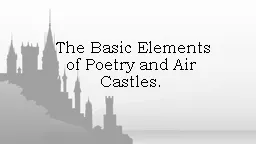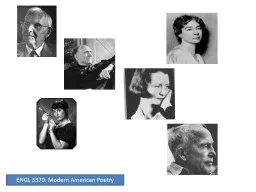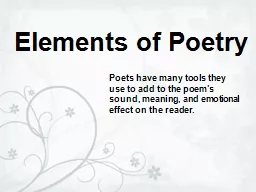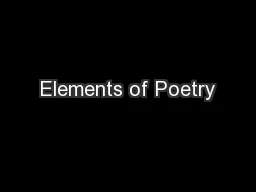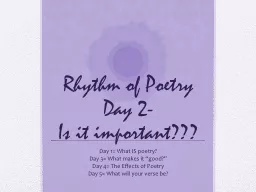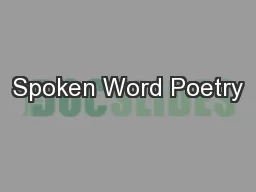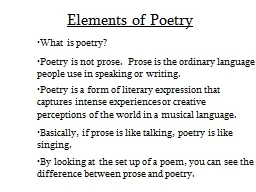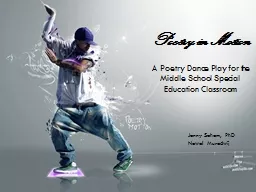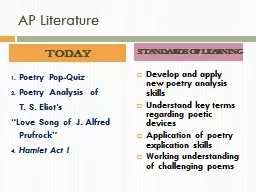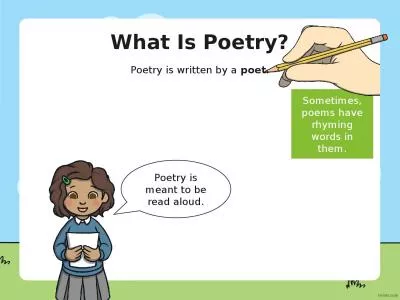PPT-What is Poetry?
Author : myesha-ticknor | Published Date : 2016-08-05
AP Literature Ms Efford Spring BY WILLIAM SHAKESPEARE When daisies pied and violets blue And ladysmocks all silverwhite And cuckoobuds of yellow hue Do
Presentation Embed Code
Download Presentation
Download Presentation The PPT/PDF document "What is Poetry?" is the property of its rightful owner. Permission is granted to download and print the materials on this website for personal, non-commercial use only, and to display it on your personal computer provided you do not modify the materials and that you retain all copyright notices contained in the materials. By downloading content from our website, you accept the terms of this agreement.
What is Poetry?: Transcript
Download Rules Of Document
"What is Poetry?"The content belongs to its owner. You may download and print it for personal use, without modification, and keep all copyright notices. By downloading, you agree to these terms.
Related Documents

